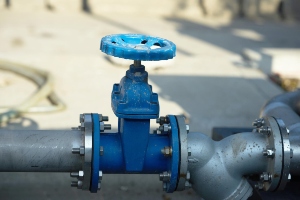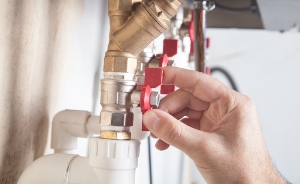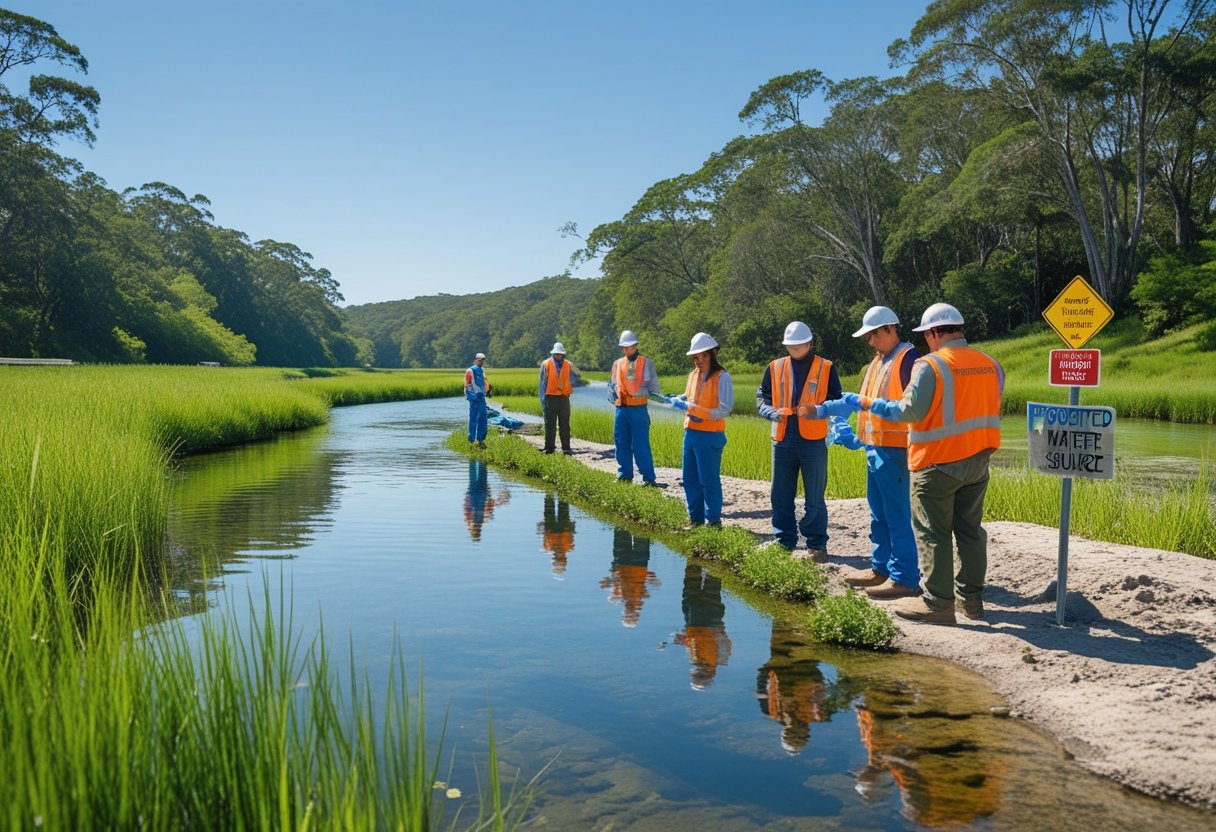Cleaning your water supply line is essential for ensuring the quality of your drinking water and the efficiency of your plumbing system. You can effectively clean your water supply line by flushing it with hot water, using a mixture of baking soda and vinegar to break down any buildup, and installing a whole-house filtration system for ongoing protection. Regular maintenance helps prevent sediment buildup and keeps your water tasting fresh.
When you neglect the cleanliness of your water supply line, you risk contaminating your drinking water and compromising your plumbing system. It's important to identify and address issues like sediment buildup and corrosion regularly. For comprehensive solutions and expert assistance, consider reaching out to trusted professionals, like Pacific Backflow, to ensure your system remains in top shape.
Taking proactive steps towards maintaining your water supply will not only safeguard your health but will also extend the lifespan of your plumbing infrastructure. By understanding how to clean your water supply line, you set yourself up for a cleaner and safer water experience.
Assessing Your Water Supply Line
Assessing your water supply line involves identifying common issues and inspecting the components, such as valves and connectors. This process ensures your plumbing system operates efficiently and safely.
Identifying Common Issues
Common issues with water supply lines can include low water pressure, discoloration, or unexpected noises. Low pressure might indicate clogs or leaks within the system. Discoloration, such as a rusty appearance, often suggests corrosion or contamination in the line.
To assess these issues, check your faucets and showerheads for consistent water flow. If any fixtures are supplying water at a notably lower pressure, consider flushing the system. This can involve running all faucets simultaneously to identify any underlying blockages. Regularly monitoring these factors helps maintain a healthy water supply and supports your plumbing's longevity.
Inspecting Valves and Connectors
Valves and connectors play critical roles in your water supply system. Start by inspecting the shut-off valves located near your water meter. Ensure they open and close smoothly, with no signs of leaking.
Next, check the connectors at various junctions in the plumbing. Look for any signs of corrosion, dampness, or mineral buildup. Addressing issues with these components early can prevent more significant problems down the line. If you notice any irregularities, it may be wise to consult a professional, such as Pacific Backflow, to evaluate and repair or replace faulty parts in your system. Regular maintenance of these components ensures reliability and efficiency in your water supply.
Preparing for Cleaning
Before starting the cleaning process of your water supply line, it's crucial to prepare effectively. This involves gathering the right tools and materials, as well as ensuring the water supply is properly shut off to prevent any accidents during cleaning.
Gathering Necessary Tools and Materials
You will need several tools and materials to clean your water supply line effectively. Gather the following items:
- Cleaning Solution: Use a mixture of bleach and water or a commercial cleaning solution designed for plumbing. This helps disinfect and remove buildup.
- Hoses: Ensure you have garden hoses to direct water flow during flushing.
- Buckets: These will catch any dirty water that may flow out during cleaning.
- Wrenches: Adjustable wrenches will assist you in loosening valves or fittings if necessary.
- Gloves: Protect your hands with gloves, especially when handling bleach or other harsh chemicals.
Keeping these tools handy will streamline your cleaning process and ensure you are well-prepared.
Shutting Off the Water Supply
Before you begin any cleaning, you must shut off the water supply to your home. Locate the main shut-off valve, usually found near where the water lines enter your home. Make sure to turn it clockwise until it is fully closed.
Once the water is turned off, open a few faucets to release any pressure in the lines. This helps prevent water from spilling when you start cleaning. Always check for additional valves that may shut off water to specific areas, like the kitchen or bathroom. Ensuring these valves are closed can help maintain control over the cleaning process.
The Cleaning Process
Cleaning your water supply line is essential to maintain safe and clean water flow. The process involves specific steps to effectively remove contaminants and buildup. Following a systematic approach helps ensure your pipes function optimally.
Flushing the Line with Water
Start by turning off the main water supply. Open faucets at the highest and lowest points of your house to facilitate air flow. Allow water to run for at least 10-15 minutes. This initial step can help dislodge debris and dirt within the pipes, flushing them out.
Consider the temperature of the water as well. Using hot water can aid the process significantly. It can dissolve grease and other residues that may be stuck inside. After flushing, inspect the water's clarity for signs of improvement.
Applying Cleaning Solutions
After flushing, it's time to apply a cleaning solution to tackle stubborn gunk. A solution of bleach or a specialized cleaning product can be effective. Mix 1 cup of bleach with 1 gallon of water to create a potent cleaning agent. Pour the mixture slowly into the system, letting it sit for at least 30 minutes to allow it to work effectively.
Be cautious with bleach; it can corrode pipes if left too long. Make sure to follow safety guidelines and use gloves when handling this solution. If necessary, you may also consider using products like PUR, which are specifically designed for cleaning water lines.
Rinsing and Repeat if Necessary
After using your cleaning solution, it’s time to rinse the system thoroughly. Open all faucets and let clean water run for approximately 10-15 minutes. This helps flush out any residue from the cleaning agents.
If you still notice an unpleasant taste or smell, consider repeating the cleaning process. This can ensure that the entire system is fully cleared. Regular maintenance of your water lines can prevent major issues and improve overall water quality.
Ensuring clean and safe water supply lines will contribute significantly to your health and well-being. If you have concerns about the process or your system, consider consulting Pacific Backflow for professional assistance in San Diego County. They offer reliable service to keep your water supply protected.
Reconnecting and Testing the Lines
After cleaning the water supply lines, reconnecting and testing them is essential to ensure they function correctly and don't leak. This process involves properly reattaching faucets and ensuring overall water flow.
Ensuring Proper Reconnection
Begin by turning off the main water supply to avoid leaks during reconnection. Reattach your plumbing fixtures, ensuring all connections are tight. Use plumber's tape on threaded fittings for an additional layer of sealing.
After securing the connections, turn the water supply back on gradually. This helps prevent sudden pressure changes which can cause leaks. Check for any signs of water drips as you go. If using a backflow preventer, ensure it is installed according to your local code to comply with regulations.
For expert help, you can trust Pacific Backflow to ensure everything is connected properly and working efficiently.
Testing for Leaks and Water Flow
Once you have reconnected your water supply lines, it's time to test for leaks. Open each faucet separately and observe the connections for any water escaping.
Allow the water to run for a few minutes to check the flow rate. If you notice any irregularities, such as weak flow or unusual noises, you may need to adjust the connections or investigate further.
For backflow prevention compliance, consider scheduling a professional service with Pacific Backflow. They can ensure your system operates safely, in line with local standards, and promptly address any issues.
Maintenance and Prevention
Consistent maintenance and proactive measures are essential for keeping your water supply lines in optimal condition. Focus on regular inspections and consider upgrading components of your plumbing system to enhance performance and safety.
Regular Inspection and Cleaning
Schedule regular inspections of your plumbing system to identify potential issues early. Inspect valves, joints, and fittings for leaks or wear. A licensed plumber can provide a comprehensive assessment and necessary repairs.
Consider cleaning your water supply lines periodically. This can prevent buildup that can affect water quality. Techniques such as flushing the lines with vinegar and baking soda can help remove deposits.
Key Actions for Regular Inspection:
- Check for leaks: Frequently inspect areas around valves.
- Monitor water pressure: Fluctuations can indicate problems.
- Test water quality: Ensure your drinking water meets safety standards.
Upgrading Your Plumbing System
If your plumbing system is outdated, consider upgrades to enhance efficiency and safety. Older pipes may not meet current safety codes, which can affect the quality of your drinking water.
Investing in modern materials such as PEX or PVC can increase durability. Additionally, replacing old backflow preventers ensures compliance with regulations. For installations or updates, rely on professionals like Pacific Backflow to ensure proper setup and function.
Benefits of Upgrading:
- Improved water quality: New systems reduce contamination risk.
- Enhanced durability: Modern materials resist corrosion and leaks.
- Compliance and safety: Stay aligned with local regulations.
Regular maintenance and timely upgrades can significantly extend the lifespan of your plumbing system, ensuring safe and clean water supply for your home.
Frequently Asked Questions
Cleaning your water supply line can raise several questions. Understanding sediment removal, effective cleaning methods, and the right household items can simplify the process. Here are common inquiries regarding water pipe maintenance.
How can you remove sediment accumulation from home water lines?
To remove sediment, start by shutting off your water supply. Open faucets to relieve pressure. Inspect and clean aerators and screens. Flushing the lines using clean water can also help dislodge sediment from the pipes.
What is the process for flushing out sediment from water pipes?
Flushing involves running water through the pipes at high speed. Begin by draining your water heater. Then, open all faucets, further allowing the water to flow continuously for several minutes. This process helps push sediment out of the system.
Which household items, such as vinegar, are effective for cleaning water supply pipes?
Vinegar is effective for cleaning due to its acidity. You can also use baking soda in combination with vinegar for deeper cleaning. This mixture generates fizzing, which helps break down deposits inside the pipes.
What steps are required to clear a clogged water pipe effectively?
First, identify where the clog is located. Use a plunger to create suction or snake the drain to remove blockages. Chemical drain cleaners can be effective, but exercise caution in using them to avoid pipe damage.
How can you eliminate limescale deposits from your house's water pipes?
To tackle limescale, prepare a vinegar solution and let it sit in affected areas. You may also consider commercial descaling products as an alternative. Both methods help dissolve the calcium buildup.
What are the recommended chemicals for cleaning water lines in residential properties?
Hydrochloric acid is a strong option for cleaning, but it must be used with extreme caution. Mild vinegar solutions are safer. Always follow the manufacturer's instructions and wear appropriate protective gear when using chemical cleaners.
For those needing additional assistance with plumbing issues, consider reaching out to professionals like Pacific Backflow, who can provide expert solutions and ensure your water system operates smoothly.











